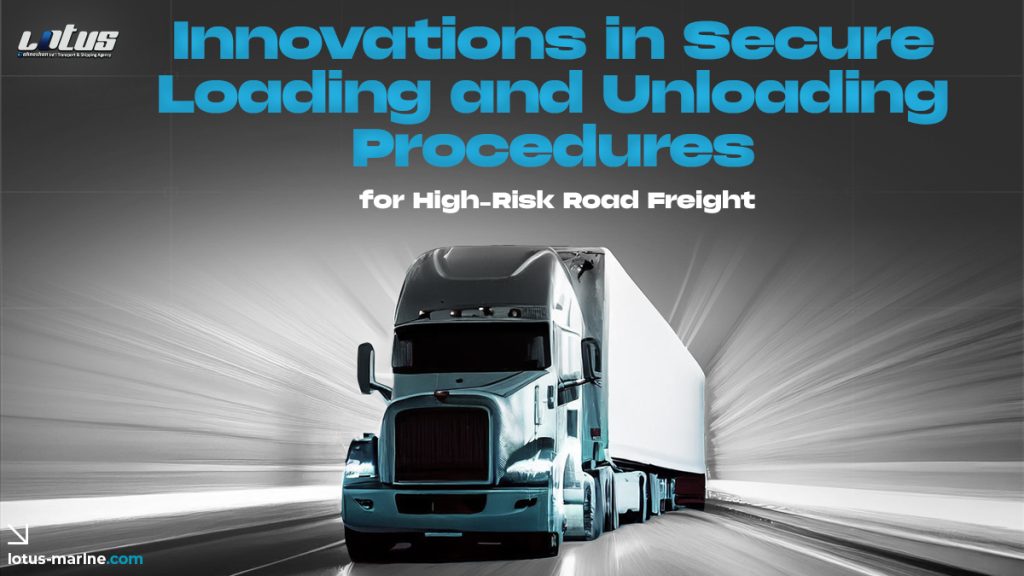Introduction
The transportation of high-risk road freight demands secure and efficient loading and unloading procedures. Whether dealing with hazardous materials or high-value goods, ensuring safety and security is paramount. Innovations in technology and process optimization have revolutionized this critical aspect of logistics, reducing risks and enhancing efficiency.
Understanding High-Risk Road Freight
High-risk road freight includes goods that are prone to theft, damage, or pose safety hazards. Examples include:
- Hazardous chemicals.
- Luxury goods like electronics and jewelry.
- Pharmaceuticals requiring temperature control.
Proper handling of such cargo is crucial to maintaining supply chain integrity.
The Role of Secure Loading and Unloading
Secure procedures mitigate risks associated with:
- Theft: Protecting goods from unauthorized access.
- Damage: Ensuring proper handling to avoid accidents.
- Contamination: Especially critical for food and pharmaceuticals.
Technological Innovations in Secure Loading and Unloading
Automated Loading Systems
Robotic systems and automated conveyors ensure precision in handling heavy or sensitive cargo, minimizing human error.
IoT and Real-Time Monitoring
IoT-enabled sensors track cargo conditions during loading, ensuring adherence to safety standards.
AI Integration
Artificial intelligence optimizes loading sequences, ensuring stability and reducing loading time.
Enhanced Safety Protocols
Secure loading begins with meticulous planning:
- Pre-Loading Inspections: Verifying the condition of cargo and vehicles.
- Real-Time Communication: Ensuring constant updates between handlers and drivers.
Advanced Locking Mechanisms
Smart Locks and Seals
These devices provide tamper-proof security, recording every instance of access.
GPS-Enabled Systems
GPS tracking ensures constant visibility of cargo location and status.
Training for Personnel
Specialized training programs teach handlers:
- Proper use of technology.
- Safety measures for hazardous materials.
- Emergency response protocols.
Regulatory Compliance
Adherence to international and regional regulations ensures legal compliance and reduces risks. Key frameworks include:
- ADR: Governing dangerous goods transportation.
- ISO Certifications: Ensuring quality and safety standards.
Risk Assessment and Management
Identifying Vulnerabilities
Risk assessments help pinpoint weak links in the loading and unloading process.
Mitigation Strategies
Implementing backup systems and redundancies ensures continuity during unforeseen challenges.
Leveraging Data Analytics
Predictive analytics provide insights into:
- Potential security threats.
- Operational inefficiencies.
- Trends in theft or damage.
Sustainability in Secure Procedures
Eco-friendly innovations like recyclable packaging materials and energy-efficient loading systems contribute to sustainability.
Case Studies of Innovation
Case Study 1: Pharmaceutical Transport
A logistics company reduced temperature deviations by implementing IoT sensors and automated locking mechanisms.
Case Study 2: Luxury Goods
GPS-enabled tracking and blockchain documentation minimized theft incidents in high-value cargo transport.
Challenges in Secure Loading and Unloading
While innovations bring benefits, challenges remain:
- Cost: Advanced systems require significant investment.
- Integration: Ensuring compatibility with existing processes.
Future Trends in Secure Road Freight
Emerging technologies promise further improvements:
- Blockchain: Enhances transparency and trust in the supply chain.
- Fully Automated Systems: Potentially eliminating human intervention.
Conclusion
Innovations in secure loading and unloading are redefining road freight logistics. From smart locks to AI-driven processes, these advancements not only enhance security but also improve efficiency. Businesses that adopt these technologies will gain a competitive edge in managing high-risk cargo.
FAQs
Q1: What is considered high-risk road freight?
A1: High-risk freight includes goods prone to theft, damage, or safety risks, such as hazardous materials and luxury items.
Q2: How do IoT sensors improve loading security?
A2: IoT sensors provide real-time monitoring, ensuring cargo conditions remain optimal and alerting handlers to any issues.
Q3: What are smart locks in road freight?
A3: Smart locks are tamper-proof devices that secure cargo and log access attempts for enhanced security.
Q4: Are automated loading systems cost-effective?
A4: While the initial investment is high, automated systems reduce long-term operational costs and risks.
Q5: How does blockchain benefit secure road freight?
A5: Blockchain creates a transparent, tamper-proof record of cargo movement, improving trust and accountability.







